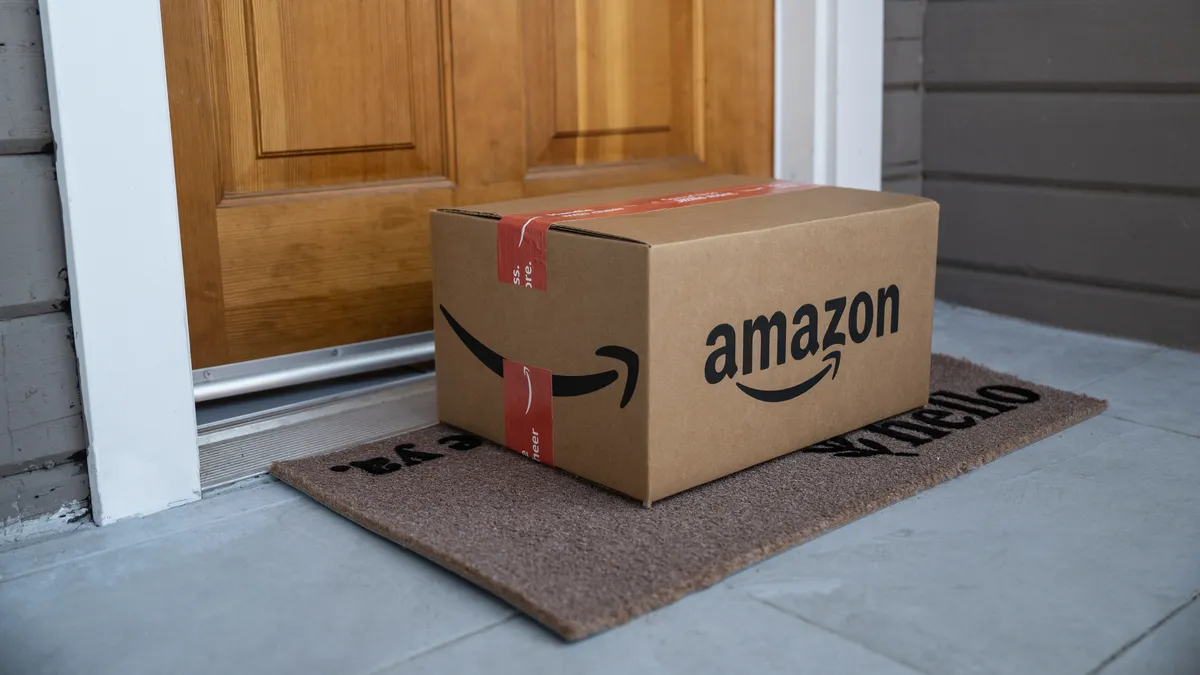Dive Brief:
- Net sales for Amazon’s online stores in the second quarter reached about $53 billion, a 4% rise year over year, the company said Thursday. Sales at the retailer’s physical stores also rose 6% to $5.02 billion.
- Third-party marketplace seller services rose 18% to $32.3 billion; subscription services, excluding AWS, grew 14% to nearly $9.9 billion; and net sales in advertising services rose 22% year over year to $10.7 billion. AWS on its own posted $22.1 billion in Q2 net sales, a 12% rise year over year.
- The cost of sales rose 18% to $251 million in Q2. During the same time, fulfillment costs rose 22% to $932 million compared to a year ago. But overall, Amazon reported another positive quarter, with net income reaching $6.7 billion and overall company net sales increasing 11% to nearly $134.4 billion.
Dive Insight:
Amazon’s overhead costs of speedy delivery continued to grow in Q2, but CEO Andy Jassy said the company continues to find ways to lower costs to serve its fulfillment network while also delivering its fastest-ever delivery speeds for Prime customers.
“Sometimes I hear people make the argument that Amazon is chasing faster speed, while driving its costs higher and where it doesn't matter much to customers. This argument is incorrect,” Jassy said during the earnings call. “First, customers care a lot about faster delivery. We have a lot of data that shows when we make faster delivery promises on a detail page, customers purchase more often. Not just a little higher, meaningfully higher. It's also true that when customers know they can get their items really quickly, it changes their consideration of using us for future purchases too.”
Amazon’s ecosystem, which is driven in part by an estimated 200 million Prime members “should enable the company to remain a share gainer across multiple industries,” Telsey Advisory Group analysts led by Joe Feldman said in a Friday note. “The focus on newer (and large) opportunities and initiatives —grocery, health/pharmacy (Amazon Clinic and RxPass), fashion, home, private brands, third-party, same-day delivery, advertising, Amazon Business, and Amazon Logistics — should make Amazon more valuable and allow the company to touch more facets of members' lives.”
And when shipments come from regional fulfillment centers closer to customers, items travel shorter distances and they arrive faster, Jassy said, adding that the regionalization is also helping to lower transportation costs.
According to Jassy, Amazon’s same-day fulfillment is one of its least expensive fulfillment mechanisms. It’s working so well that Jassy said the company plans to double the number of same-day fulfillment facilities, which typically house the company’s top 100,000 SKUs. “We believe that we are far from the law of diminishing returns on improving speed for customers,” Jassy said. “We’re seeing strong early results from this regionalization effort.”
Amazon reported operating income rose to $7.7 billion in Q2, up from $3.3 billion last year. In North America, the company posted positive operating income of $3.2 billion versus a $627 million operating loss at the same time last year.
Amazon issued Q3 guidance that net sales will range between $138 billion and $143 billion, which is 9% to 13% year-over-year growth, and that operating income will range from $5.5 billion to $8.5 billion versus $2.5 billion a year ago.
“Amazon has powered through the softness in the wider consumer economy to produce a very solid set of second-quarter results, which suggest the company is getting its mojo back after a period of relatively muted performance,” Neil Saunders, director of GlobalData, said in emailed comments.
Saunders also said Amazon deserves credit for reducing post-pandemic costs and improving customer service. He noted that initiatives to address those issues were sometimes implemented simultaneously.
The company’s latest results “prove that Amazon is a company in control of its destiny. It coped with massive disruption during the pandemic and has shown great flexibility in adapting to the different world we are now in socially and economically,” Saunders said.















